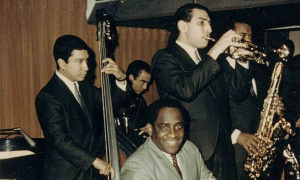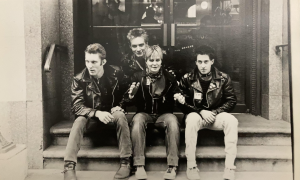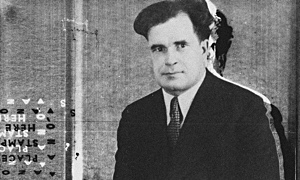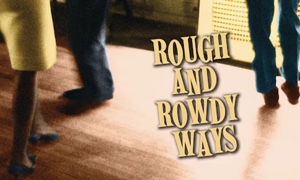Home » Jazz Articles » Hardly Strictly Jazz » Los Lobos: Kiko - 20th Anniversary Edition
Los Lobos: Kiko - 20th Anniversary Edition
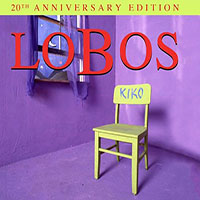 Los Lobos
Los Lobos Kiko: 20th Anniversary Edition
Shout! Factory
2012
Looking over the punk-era rise of Los Angeles roots rock, reveals an embarrassment of musical riches. The prototypical outfit was Bluzblasters, a literate working class rockabilly-tinged barband whose songs (written by Dave Alvin) were knowing, compassionate stories of real American life, and they inspired a movement of imitators. Then there was X, fronted by the husband/wife team of John Doe and Exene Cervanka, whose punk aesthetic also drew on a wealth of American roots music, from Woody Guthrie to rockabilly and beyond. It seemed at the time as if the bands who came to attention in their wake—including Los Lobos—were almost an afterthought.
It seems crazy to think of Los Lobos being together now for forty years—only ten less than the Rolling Stones—but here we are. No other American band has endured quite so steadily, nor evolved in a more original way over time. Usually, a band grows as a result either of the increased complexity of its songs or of its greater command of improvising, but Los Lobos has managed both. And when it unleashed Kiko (in 1992), it not only sealed its reputation as sonic alchemists but also as a great soloing/interacting ensemble.
When Los Lobos first came to national attention with the release of the 1983 EP And A Time To Dance (Slash), it did not seem likely that it would eclipse its punk-era Los Angeles peers. That same year, X released the glorious More Fun In The New World (Elektra), and the Blasters put out the flawed but often brilliant Non Fiction (Slash/Warner Bros). It would seem that the most fertile roots music ground was already being tended very well.
Upon closer inspection, not for long. More Fun turned out to be X's last great studio album, while the Blasters only had one more studio album left. Meanwhile, the Lobos evolved into as formidable a roots band as any ever to come from LA, with songs skilled as Dave Alvin's, and a hardhitting blues-based approach that recalled the best days of Canned Heat. The Lobos boasted a frontline of guitarist/streetwise vocalist Cesar Rosas (trademark shades and goatee) and guitar genius/angelic vocalist David Hidalgo (a multi-instrumentalist whose abilities as violinist, accordionist and drummer are staggering). The quality of the singing and soloing would likely have been enough to get the point across. But these guys were from a place with a real musical vantage point: East Los Angeles, a fully Chicano community whose sound of music is equal parts old rhythm'n'blues, Latin dance music, Mexican folk music, rock'n'roll and whatever else. While the sound is identifiable, the recipe has never been set formally. The Lobos knew Chess blues, Clarence White-era Byrds, Cream and Trio Los Panchos about equally. When Blasters saxophonist Steve Berlin jumped ship to the Lobos, the band's sound seemed set in stone, and for a few years, it was—a real roots rock drive colored with traditional Mexican instruments and songs.
By the time of Kiko, the band had been together for twenty years. It had run the gauntlet from the LA punk/roots community to national attention, and even enjoyed mainstream success with the soundtrack to the 1987 Ritchie Valens biopic La Bamba, complete with a huge hit single. To insure subsequent rock stardom, all it needed to do would have been to follow it up with an electric rock album in English.
But in 1988, the band instead put out La Pistola y El Corazón (Slash), a thrilling all acoustic album of Spanish language Mexican folk songs. In 1990, it returned to its high quality tried and true formula with The Neighborhood, a record that neither alienated the faithful nor won any new converts. There was a shimmering take on Jimmy McCracklin's fantastic "Georgia Slop," one of the few times where the cover was as great as the original, but otherwise the record came off as a solid, journeyman effort. That the all-star Texas Tornados debut album came out at the same time on the same label likely didn't help matters.
Meanwhile, Los Lobos went back on the road in the ensuing months and—if one show on the tour was typical—cemented its reputation as the best, freshest non-new band this side of NRBQ, who were also still the best fresh non-new band on the circuit.
Kiko arrived as if all of a sudden in 1992, a record so startlingly different that the band immediately became difficult to classify. No more comparisons to the Blasters. The hard realism of earlier Lobos material like "A Matter Of Time" and "One Time, One Night" gave way to a more abstracted and cerebral style, and the band was suddenly likened to Tom Waits and Captain Beefheart. In jazz terms, it was as if Miles Davis had moved, in one leap, from acoustic to electric music. It's that giant (and aggressive) a step.
Very few records ever sounded this... different. "Dream In Blue" opens the album with a snare drum that sounds like a cross between a New Orleans parade rhythm and something conventionally Latin, topped with a bass line right off an old War record, fragmented electric guitar, and baritone saxophone and fuzztone guitar stacked together in some kind of off-kilter horn section. Hidalgo sings lead on this one and takes a short guitar solo worthy of (insert guitar genius name here). This Lobos—thanks in no small part to the production team of Mitchell Froom and Tchad Blake—had arrived in rarified songcraft/sonic territory while keeping its roots expression completely intact. The full-on blues explosion of "That Train Don't Stop Here Anymore" features Hidalgo and Rosas (who sings lead on the track) trading off blistering guitar solos, before Berlin closes the tune out with a great, rude baritone saxophone solo. The whole record is characterized by audacious sonic choices, inventive instrument combinations, and striking recording technqiues.
The blues blast of "That Train" is followed by "Kiko And The Lavender Moon," a dark cumbia that paints itself in dark muted acoustic and electric tones, sounding nothing like the tune before yet cut clearly from the same cloth.
The entire disc moves through a carefully sculpted musical world but never loses its improvisory edge, the ensemble feeling almost like some Latinized cross between XTC and the Grateful Dead while leaning on Latin and funk rhythms in a way that makes sure we know the Lobos grew up on bands like El Chicano and Malo, whose singles were staples of East LA car radios. Whereas on the previous albums, the band stayed in a more typical roots pocket—breaking stylistic rank generally to go into Mexican folk territory—Kiko shows a band that discards no influence. Moreover, David Hidalgo and Cesar Rosas emerge as a guitar duo and dynamic and original as any since Richard Lloyd and Tom Verlaine of Television, but with a deeper, blusier base. There is an impossibly high level of invention in the playing throughout this disc
The record's Americana moments are placed throughout almost as stepping stones. Tunes like "Whiskey Trail" and "Peace" prove the group's roots sensibilities were as intact as ever, but they're not the centerpieces they would likely have been on previous Lobos records, nor are these roots by any means exclusively American. The extremely (Mexican) traditional "Saint Behind The Glass" sounds is a harp-driven folk song. And the record's closer, "Rio De Tenampa," intentionally opens with a blast of distorted saxophones that sound like they came off one of those crappy banda records that use synthesizer horns instead of real ones. While the overall impression of this record is otherworldly, Kiko contstantly reminds, "Wherever this music might be going, it comes from this grounded place."
(Kiko's follow-up, 1996's Colossal Head, on Warner Bros., might even be better.)
It's twenty years since this record first hit the streets. Its critical reputation is huge, bordering on hyperbole. Whatever. Los Lobos is now forty years together, and is probably America's Band as much as any band can be. Kiko says why, in unimpeachable musical language.
Tracks: Dream in Blue; Wake Up Dolores; Angels with Dirty Faces; That Train Don't Stop Here; Kiko and the Lavender Moon; Saint Behind the Glass; Reva's House; When the Circus Comes; Arizona Skies; Short Side of Nothing; Two Janes; Wicked Rain; Whiskey Trail; Just a Man; Peace; Rio de Tenampa; Whiskey Trail (studio demo); Rio de Tenampa (studio demo); Peace (live); Arizona Skies/Borinquen Patria Mia (live); Kiko and the Lavendar Moon (live).
Personnel: Steve Berlin: tenor, baritone and soprano saxophone, flute, melodic, harmonica, organ, piano, synthesizer, percussion; David Hidalgo: guitars, accordion, violin, banjo, piano, percussion, vocals; Conrad R. Lozano: Fender 5-string Jazz bass and 4-string Precision bass, Godin fretless bass, guitarrón, background vocals; Louie Perez: drums, vocals, guitars, percussion, couch and phone; Cesar Rosas: electric and acoustic guitars, vocals; Pete Thomas: drums; Victor Bisetti: drums (15, 16), percussion; Fermin Herrera: Veracruz harp (6); Alex Acuña: percussion; Gary Mallaber: drums (2); Mitchell Froom and his House of Keyboards La Chilapeña brass band.
< Previous
O.A.R.: Wantagh, New York, August 9, ...
Next >
Wonderful! Wonderful!
Comments
About Los Lobos
Instrument: Band / ensemble / orchestra
Related Articles | Concerts | Albums | Photos | Similar ToTags
Los Lobos
Hardly Strictly Jazz
Skip Heller
United States
Shout! Factory
The Blasters
Cesar Rosas
Cream
Jimmy McCracklin
Tom Waits
Captain Beefheart
Miles Davis
War
Mitchell Froom
Grateful Dead
El Chicano
Malo
Television
For the Love of Jazz
 All About Jazz has been a pillar of jazz since 1995, championing it as an art form and, more importantly, supporting the musicians who create it. Our enduring commitment has made "AAJ" one of the most culturally important websites of its kind, read by hundreds of thousands of fans, musicians and industry figures every month.
All About Jazz has been a pillar of jazz since 1995, championing it as an art form and, more importantly, supporting the musicians who create it. Our enduring commitment has made "AAJ" one of the most culturally important websites of its kind, read by hundreds of thousands of fans, musicians and industry figures every month.






